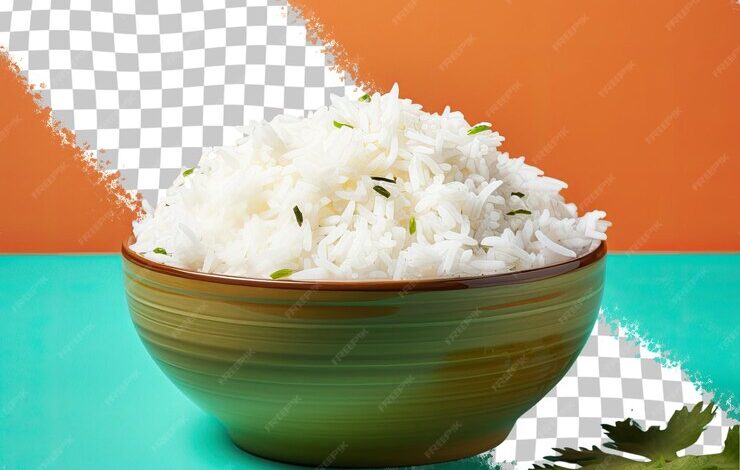Is Basmati Rice Good for Diabetics? A Comprehensive Guide to Healthy Eating

Is basmati rice good for diabetics? This is a common question for those who have diabetes and are looking to manage their blood sugar levels while enjoying their favorite foods. Basmati rice, often known for its long grains and aromatic fragrance, is a popular choice in many dishes. But when it comes to diabetes, choosing the right type of rice is essential for managing your health.
In this article, we will explore the benefits and potential concerns of including basmati rice in a diabetic diet. We’ll look at how basmati rice affects blood sugar levels, its glycemic index, and whether it’s a good choice for diabetics. By the end, you’ll have a clearer understanding of how to incorporate basmati rice into a balanced, diabetes-friendly meal plan.
What Makes Basmati Rice Special for Diabetics
Is basmati rice good for diabetics? Basmati rice is a popular variety of rice known for its unique fragrance and long grains. But does it have health benefits for diabetics? Yes, basmati rice has a few features that might make it a better choice than other types of rice.
Another benefit of basmati rice is that it’s rich in fiber, especially if you opt for the brown version. Fiber helps slow down the digestion process, making it easier for diabetics to control blood sugar spikes after eating.
How Basmati Rice Affects Blood Sugar Levels: A Diabetic’s Guide

For diabetics, managing blood sugar is key. Is basmati rice good for diabetics? It can be, especially if it’s eaten in moderation. Since basmati rice has a lower glycemic index compared to other types of rice, it causes a slower rise in blood sugar. This makes it a better choice for those who want to manage their diabetes without giving up rice completely.
However, it’s important to understand that any type of rice can cause blood sugar to rise, even if it’s basmati. The key is to focus on portion control and balance your meal. Pairing basmati rice with protein or healthy fats can also help lower the overall glycemic impact of the meal.
- Eat small portions: Limit the amount of basmati rice you eat to avoid spikes in blood sugar.
- Pair with protein: Protein-rich foods can slow down the digestion of rice, keeping your blood sugar stable.
Glycemic Index of Basmati Rice: Is It Safe for Diabetics
The glycemic index of basmati rice is much lower than many other types of rice, like white rice. For diabetics, this means it won’t spike blood sugar levels as quickly as other high-GI foods. This makes it an attractive option for diabetics looking for healthy carbs.
However, the glycemic index of basmati rice can vary. White basmati rice has a medium GI, while brown basmati rice has an even lower GI because it retains more fiber and nutrients. This makes brown basmati a better option for blood sugar control, as fiber helps slow the absorption of sugar.
- White Basmati Rice: GI 58 (medium)
- Brown Basmati Rice: GI 50 (low)
When choosing rice for a diabetic diet, opt for brown basmati if possible, as it is healthier and will have a lesser effect on your blood sugar levels.
How to Include Basmati Rice in a Diabetic Meal Plan

Is basmati rice good for diabetics? Yes, if it’s added to a balanced meal plan. You don’t need to cut out rice completely, but it’s important to eat it in a way that doesn’t interfere with blood sugar control. Here are some tips on how to include basmati rice in a healthy diabetic meal plan.
Portion control is crucial. Diabetics should eat small servings of basmati rice. It’s also important to pair rice with other nutrient-dense foods like vegetables, lean proteins, and healthy fats to ensure that the overall meal has a balanced effect on blood sugar.
Consider timing your meals as well. Eating rice with a balanced lunch or dinner, instead of at breakfast, may have less impact on your blood sugar. Eating rice later in the day when your insulin sensitivity is higher might be a good strategy.
- Stick to ½ cup servings: This portion size helps control the glycemic impact.
- Combine with fiber-rich vegetables: This can slow down the digestion of rice.
- Avoid processed foods: Combine rice with fresh, whole foods for the best results.
Conclusion
In conclusion, basmati rice can be a good option for diabetics when eaten in moderation and as part of a balanced meal. Its lower glycemic index compared to other rice types means it has a slower effect on blood sugar levels. Choosing brown basmati rice, controlling portion sizes, and pairing it with healthy foods like vegetables and proteins can help keep your blood sugar levels in check. By following these tips, diabetics can enjoy basmati rice without worrying too much about their health.
Remember, it’s important to always pay attention to portion sizes and balance your meals. While basmati rice can fit into a diabetic diet, it’s the overall meal plan that matters most. So, with the right approach, basmati rice can be a healthy addition to your diet without negatively affecting your blood sugar levels.
FAQs
Q: Is basmati rice better than white rice for diabetics
A: Yes, basmati rice has a lower glycemic index than white rice, making it a better choice for diabetics.
Q: Can diabetics eat basmati rice every day
A: It’s okay to eat basmati rice occasionally, but portion control is important. Always balance it with other healthy foods.
Q: Should diabetics choose brown or white basmati rice
A: Brown basmati rice is a better option because it has more fiber and a lower glycemic index than white basmati rice.




